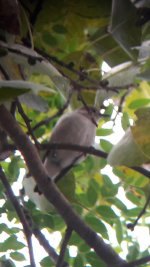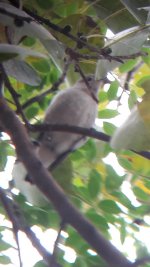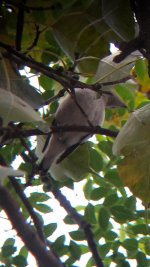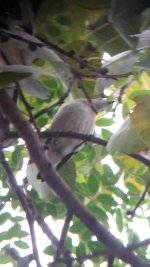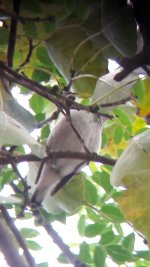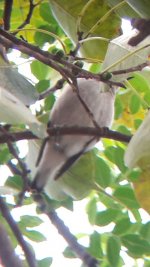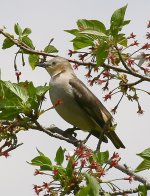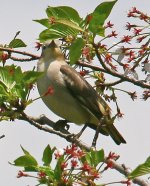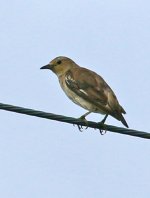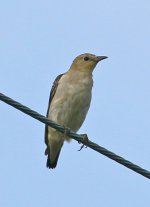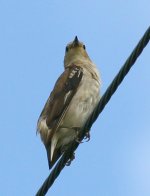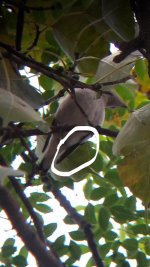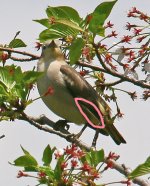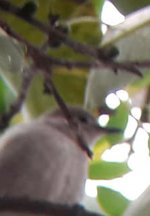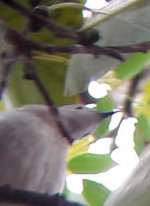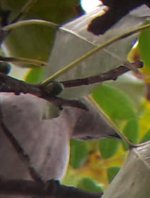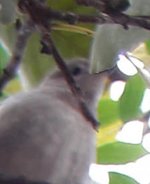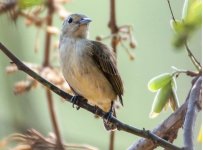I'm not familiar with this species, but I've been looking at some online images, and it seems the bill can appear thin if the bird is viewed from below. Perhaps not as thin as it appears in these images, but that could be down to low resolution.
John, Daurian is also a vagrant to Nepal, so there's no reason to assume this bird is that species and not Chestnut-cheeked. If you ask me, it looks a bit warmly-coloured for Daurian.
MacNara, this might be an immature male, which would explain why it has a sizeable white patch on the edge of the wing.
Well, I'm going to bore you all again with my photos.
Chestnut-cheeked Starling goes through my area for a couple of weeks in early April on its way north to breed. It seems to like to take a break in our park when there is still blossom on the cherries, but some leaves are out.
I won't include a photo of an adult male, because I don't think this bird could possibly be that.
The first two photos show a female (same bird). There's no white in the lower wing, and only a dab at the top. The rump is white, but I don't think the OP's photos can show any rump given the angle. Also, the overall colouring looks different to the OP's bird to my eye.
Because they don't breed here, and because they are less on the return, we don't usually see juveniles. But a couple of years ago, I found a bird in early August mixed in with our resident White-cheeked Starlings. This was very unusual because they pass back in mid-September, so this bird was out of sync. At the time, I ID'd it as a juvenile (1cy) male - I think the wing marking is too strong to be a female, and you can see the metallic green colouring in the upper wing (if you zoom in a bit) which the female doesn't have, but it lacks the pattern and colouring of the adult male. I attach three photos of this bird.
Again, there is no significant white in the lower wing - so my opinion is that a juvenile doesn't show this feature, although I don't know if recently fledged bird might. However, the OP's bird was taken this April, so surely the plumage would be adult-ish by this time (and as I said, shouldn't it have left for the north already)?
The second photo shows this bird from an angle similar to the OP's view of his bird.
For both the female and the juvenile, I have included a photo with the bill seen from directly underneath, and although it obviously looks narrower than from other angles, I can't get it to match the OP's photo 4.
Can I just say that I would be delighted for Uvin if he (she?) went back to the park and got good shots of this bird and that he got (the first?) record of Chestnut-cheeked in Nepal.
The reason I answered the Uvin in the first place is that his thread was slipping down the pages unanswered, and especially as he is a new member, I didn't want to leave his question ignored.
And the reason I didn't answer earlier is that I thought C-c S was out of range and that someone with knowledge of birds in Nepal would come along and answer. But no-one did, so I jumped in, hoping the bump would encourage someone else.




